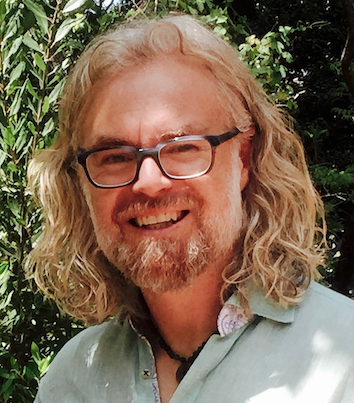
Our stories have always passed through the hands of archivists. Over time, the mediums have changed but the need to preserve our memories remains the same. Today, chances are if you are carrying a smartphone, you’re carrying parts of your story with you, but our lives are also recorded in photographs and family albums, on cassette tapes, and in home movies: mementos from our past. It wasn’t until the last time I prepared for a fire evacuation that these objects became something so incredibly valuable to me.
A vintage cassette collection with handwritten mixtape covers I had purchased from a local radio station that had gone under my husband’s VHS skateboarding archive, how could we leave these behind? I took a handful, tucked them into my knapsack and left the others, silently vowing to myself I would never let that happen again.
Sam Najah’s mission is to help preserve memories like these through family legacy videos and video memoirs. He is a modern archivist adapting to a digital age.
Tell us a little bit about where you are from, and your background in storytelling through production and media archiving.
I’ve lived in Southern California since 1986 and made the move to Topanga with my wife and son in 2009. Video production is my passion and I appreciate and understand how hard storytelling can be. I’ve been in the video production business for over 30 years, producing and directing commercials and various stunt related projects through my company 900frames.com.
I recently launched my new endeavor, Westside Video Service. We offer media archiving services (think VHS Tapes, slides, old film transferred to digital format). We also specialize in producing legacy videos. This is where we artistically and professionally tell a person’s life story via video interview, extensive editing, with added music, photos, and video clips. This is especially an area of interest for me as I enjoy the entire process.
Media archiving is something that everyone should participate in, whether they are preserving their family archive or a professional body of work. With threat of fire I often find myself wondering what is at stake of being lost forever. What are the first steps in getting organized before reaching out to you?
It’s really simple. Just gather all of your photos, videos, anything you want archived, and place it into a box. We’ll take it from there. Most people never end up making the call because they feel they need to fully organize every single photo and video beforehand. That’s simply not necessary. Just get the process started. Over time, videotapes mold, pictures fade, hard drives fail. And of course there’s always the looming threat of a fire. Don’t wait until it’s too late.
I believe people are more technically savvy than in years past, but you still need professional scanners, video tape players, etc. to do a proper job of archiving. Quality is paramount in my opinion. You want to capture your analog memories in the best possible resolution with professional equipment. Make sure to ask lots of questions when contacting a transfer service. You typically get what you pay for in regards to quality.
What are some of the most meaningful assignments you worked on? Have you ever been asked to work on something quite strange or startling?
More fascinating than startling. I’m currently archiving a project for a client that involves thousands of actual photos taken in the early 1900’s of Topanga and surrounding beach cities. Amazing to see how much the area has changed in 100 years.
Can you tell me more about the kinds of things you add to the legacy videos you create?
Well, for example, a recent legacy video I’ve been working on, my client was talking about a 1956 Sugarbowl he went to for college football. He was sitting with the mayor of Ohio and it was a thrilling game. It was memorable and all of his family was there. Of course, he doesn’t have footage from that, but I was able to search the internet to find footage of that specific football game and edited it together with his story. The clips I found were almost exactly like what he had talked about. He also talked about the Rose Parade in the 50s and I found some of that footage and some famous photographers he knew back in the day and I was able to include their photos. It takes a bit of time and knowing how to navigate, but it’s really about tracking down this footage and the stills on the internet and editing it in.
How do you use your skills in your personal life?
It’s been a real honor for me, because filming is my creative outlet and I enjoy it and what better subject to film than my son and his friends and our friends and families in the community? Since 2010, I’ve been capturing events within our community and sharing them with all our friends and family. I also helped facilitate the filming and editing of the short films we created for the TYS play of Singing in the Rain last year. That was a blast. The photos or video bring so much joy, which is a big part of why I do it
Learn more about Sam Najah and his archiving and video legacy services at https://www.westsidevideoservice.com












